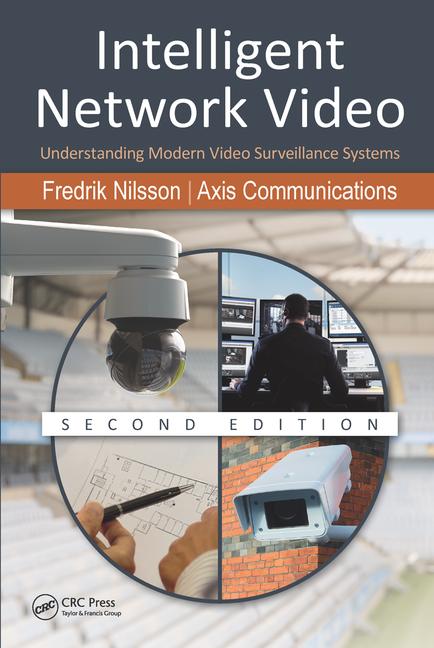How Modern Security Solutions Are Engineered for Greater ROI
3 Ways Businesses Are Deriving More Value from Their Security Systems

Measuring a return on investment (ROI) for security infrastructure is challenging. Most organizations primarily view security investments as a must-have capital expenditure. They know security systems are fundamentally necessary to protect people and assets and keep operations running smoothly. So while these technologies fulfill objectives and successfully help security teams prevent incidents, organizations oftentimes will ask: How can we truly quantify the value of a breach that never occurred?
The difficulty of measuring ROI hasn’t diminished security leaders’ appetite for it. Security is often a large expense, so today’s savvy organizations are looking for ways to extract greater value from their security investments, and ultimately, generate a healthy return. In this article, we’ll discuss specific examples of how businesses are deriving value from modern security technologies and share key considerations decision-makers should think about when evaluating a new security solution and the potential ROI.
3 Ways Businesses Are Deriving More Value from Their Security Systems
-
Empowering operators to do more.
Gone are the days of using disconnected and siloed systems for basic investigative and monitoring tasks. Today’s operators are actively managing thousands of network-connected devices including video cameras, access control readers, fire alarm panels, intrusion devices, perimeter detection sensors, analytics and more. All this information is streaming back over the network to operators who must quickly decipher what’s happening and respond.
The organizations that are getting the most value from these sensors are unifying their security systems into one platform. They are investing in advanced security technology which to automate workflows and guide operators through tasks and decisions. For an operator, this means instead of jumping from to interface and managing different vendor solutions, they can handle tasks in fewer steps using one platform. Using visual verification, they are also better equipped to filter out false alarms, avoiding needless action while resolving an incident. All of this translates to huge efficiency gains in the long run.
While it’s case dependent, every operator might gain 10-15% more time in their day simply by eliminating those extra steps. Then the question becomes: With this time savings, what additional objectives could a security director set for their staff to achieve? Or what additional security and safety standards could they implement to enhance their security strategy?
-
Streamlining critical maintenance tasks.
Many organizations tend to be reactive when it comes to security system maintenance. If an operator notices that a security device fails, or a system needs an update, then they will eventually schedule some time for the task. However, IT resources are usually juggling many priorities, so finding the extra time to manually update security software or device firmware is difficult.
Instead, IT teams and security managers are relying on advanced security solutions to streamline maintenance and help them become more proactive in keeping their systems running at peak efficiency. For instance, these forward-thinking security solutions provide built-in reminders for device firmware and system updates, giving operators greater flexibility in scheduling upgrades during off-peak business hours. And there’s no need to dispatch a technician to manually upgrade field devices one by one. Once scheduled, the system can also automatically run certain upgrade tasks, so the operator only needs to validate all went well.
Security managers can also use health monitoring tasks to detect security gaps or patterns of system inefficiency that could compromise security and business continuity. For example, a security manager could run a door-forced-open report, or open an automated report sent via email, to determine if one or more doors are generating an unusually high volume of troublesome events. Retrieving video for those specific door events might show a faulty lock unable to keep a door properly closed. Immediately, the manager could trigger a maintenance activity request to get the issue fixed, eliminating costly vulnerabilities for the business. Taking it one step further, when health monitoring is built-into a security platform, health checks and notifications are automated, making it that much easier to detect and resolve issues.
- Using Insights to Improve Business Operations.
With greater connectivity comes greater collaboration. Security and IT teams are leveraging more collaborative security platforms to create new ties with other teams such as marketing, business analysts, human resources operations. These teams are tapping into security infrastructure to collect data that is pertinent to their own needs and objectives. They can then derive valuable business insights from security data and make improvements that can positively impact a business’s bottom line.
For instance, airports can provide new intelligence to operations managers and analysts who can benefit from a clearer picture of the passenger experience. With access to this timely information, operations teams could see how passengers move through an airport, determine which bottlenecks cause delays, and validate whether improvements have increased passenger throughput and satisfaction. Airports could also grant temporary access to video and other data to airlines, so they can better monitor boarding procedures and passenger flow at gates. They can then work together to fine-tune the process and ensure the right balance between safety, compliance and customer service is being met.
Choosing a Security Solution for Best ROI Potential
To realize the most value from a security investment, organizations should look for solutions that not only bring all systems under one platform but also help streamline processes and automate manual tasks.
Beyond that, it’s important for security and IT directors to think outside their needs and objectives and help build an organizational business case for these types of investments with other departments. Understanding how other teams might be able to leverage security data to improve operations can evoke many ROI-generating applications. Beyond IT and security, many other departments can also share the cost of procuring and maintaining these new security investments, allowing for bigger budgets and better choice.
Organizations that invest in an advanced and unified security platform will be able to reap monetary returns today and well into the future as technology continues to evolve.
Looking for a reprint of this article?
From high-res PDFs to custom plaques, order your copy today!








